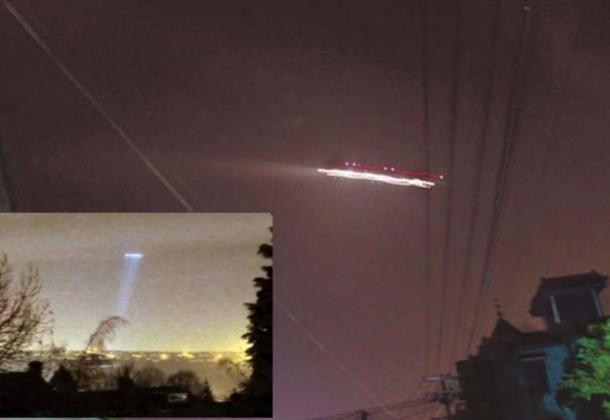Earlier this week I wrote about a pending U.S. report on UFOs, now known as UAPs (Unidentified Aerial Phenomena) which will be tabled in the American Senate on June 25, 2021. Well, it seems, not to be outdone by the U.S., China, through unnamed intelligence officials, has leaked their own close encounters. So there goes the theory that UFOs are some form of advanced Chinese military technology. That only leaves the Russians where the only word about UFOs has come recently from a cosmonaut aboard the International Space Station (ISS) who reported what he called “space guests” captured on video as seen through a station window. Roscosmos, the Russian Space Agency, indicated it was investigating.
But it is the Chinese leak as reported in the South China Morning Post, which states the military in the People’s Republic is tracking what it calls UACs (Unidentified Air Conditions), its term for UFOs, and applying artificial intelligence (AI) to try and make sense of hundreds of sightings across the country.
Chen Li who serves in the People’s Liberation Army (PLA), at the Air Force Early Warning Academy, in a 2019 report notes the frequent occurrence of UACs in recent years. Applying AI to the entire dataset of sightings, he states that China hopes to figure out what is being observed while separating natural and explainable phenomena.
In one notable 2010 incident (see the image at the top of this posting), the Hangzhou Xiaoshan International Airport reportedly shut down its operations because of an observed UAC which lingered in the area for several hours. At the time locals reported a glowing object that resembled a comet but the picture displayed above doesn’t really fit that description. Could these be the running lights of an airship or other type of lighter-than-air craft?
But it is reports coming from radar stations, pilots, police, weather stations, and science observatories that China is putting into a national database for the AI to analyze. From this, the PLA hopes they can discern consistent patterns including the behaviour of the objects, their shapes, and possibly their make and materials. The end result could be the development of an appropriate threat index to apply to future sightings.
China takes the search for extraterrestrial (ET) intelligence very seriously. The country has invested in the world’s largest radio telescope, even bigger than the recently decommissioned Arecibo Observatory in Puerto Rico. One of its projects is to search for ET with it concentrating much of its focus on the dense star fields located at the centre of our galaxy. It is the sheer number of stars in this location that makes it an ideal hunting ground to find ET’s signal.
So what can explain this Chinese fascination? Maybe it’s because China only recently staved off the threat of being dominated by earthly aliens. Of course, I’m referring to the 19th and early 20th-century encroachments by European colonial powers, the British Opium Wars, the establishment of Hong Kong and European and Japanese control of other coastal ports, and the Japanese invasion and occupation prior to and throughout the Second World War.
In the absence of similar reports from Russia other than the one cosmonaut sighting on the ISS, don’t be surprised if the U.S. or China point to Russia as a terrestrial source for many UFO sightings.
A final note: Observations of UFOs are not just a contemporary phenomenon. They go back millennia from ancient Egypt to the present. One might even conjecture that our religious faiths owe much to the inexplicable observed in past night skies.









